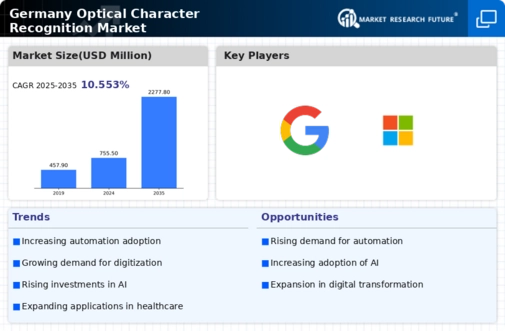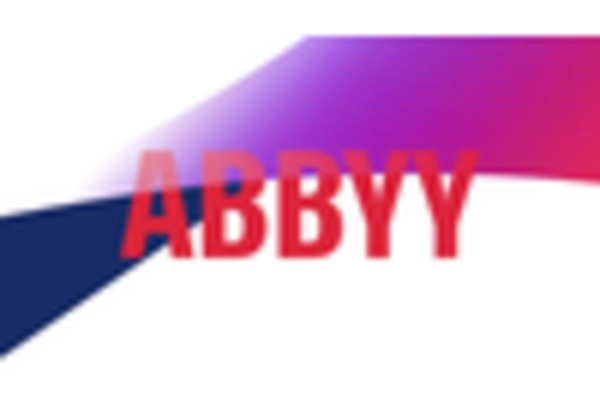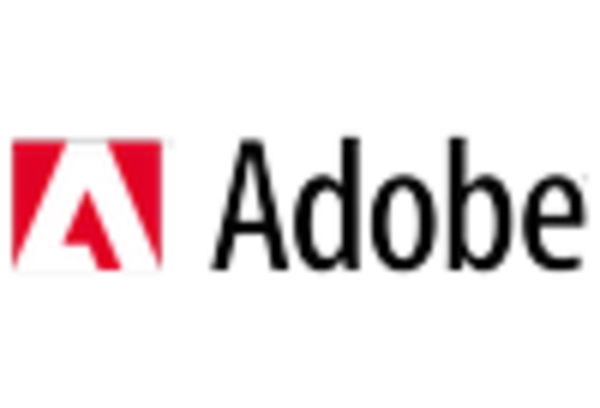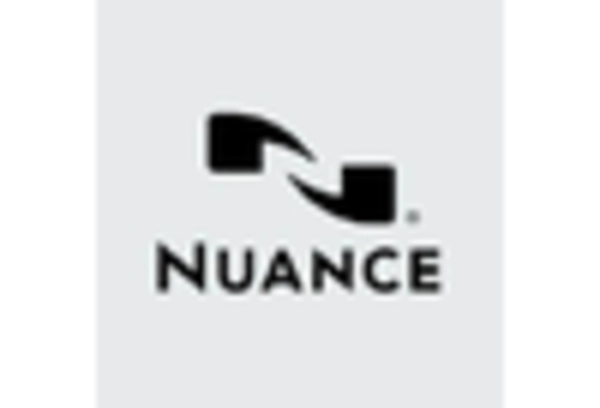Rising Demand for Automation
The optical character-recognition market in Germany is experiencing a notable surge in demand for automation across various sectors. Businesses are increasingly seeking to streamline operations and enhance efficiency, leading to a greater reliance on OCR technologies. This trend is particularly evident in industries such as logistics, banking, and healthcare, where the need for rapid data processing is paramount. According to recent estimates, the automation sector in Germany is projected to grow at a CAGR of approximately 8% over the next five years. As organizations strive to reduce manual data entry and improve accuracy, the optical character-recognition market is poised to benefit significantly from this shift towards automation.
Technological Advancements in OCR Solutions
Technological advancements are significantly influencing The Optical Character Recognition Market in Germany. Innovations in machine learning and artificial intelligence are enhancing the accuracy and speed of OCR systems, making them more appealing to businesses. The introduction of cloud-based OCR solutions is also transforming the landscape, allowing for greater scalability and accessibility. As organizations seek to leverage these advancements, the market is expected to witness a compound annual growth rate (CAGR) of around 10% over the next few years. This technological evolution not only improves the functionality of OCR systems but also expands their applicability across various industries, thereby driving market growth.
Growth in E-commerce and Digital Transactions
The expansion of e-commerce in Germany is driving the optical character-recognition market as businesses increasingly rely on digital transactions. With online shopping becoming a staple for consumers, companies are adopting OCR solutions to manage invoices, receipts, and other documentation efficiently. The e-commerce sector in Germany is expected to reach a valuation of €100 billion by 2025, indicating a robust growth trajectory. This growth necessitates the implementation of OCR technologies to facilitate seamless data extraction and processing, thereby enhancing customer experience and operational efficiency. Consequently, the optical character-recognition market is likely to see increased investments and innovations to cater to this burgeoning demand.
Growing Need for Multilingual OCR Capabilities
The optical character-recognition market in Germany is witnessing a growing need for multilingual OCR capabilities. As businesses expand their operations internationally, the ability to process documents in multiple languages becomes increasingly essential. This demand is particularly relevant in sectors such as tourism, education, and international trade, where diverse language requirements are common. The market for multilingual OCR solutions is expected to grow as companies seek to enhance their global reach and improve customer service. By addressing this need, the optical character-recognition market is likely to see an influx of innovative solutions tailored to meet the linguistic challenges faced by businesses operating in a multilingual environment.
Increased Focus on Document Management Solutions
The optical character-recognition market is benefiting from an increased focus on document management solutions in Germany. Organizations are recognizing the importance of efficient document handling and storage, leading to a rise in the adoption of OCR technologies. This trend is particularly pronounced in sectors such as legal, healthcare, and finance, where accurate document processing is critical. The document management market in Germany is projected to grow at a CAGR of 7% through 2025, further fueling the demand for OCR solutions. As businesses strive to enhance productivity and reduce operational costs, the integration of OCR into document management systems is likely to become a standard practice.

















Leave a Comment